Potrebujeme váš súhlas na využitie jednotlivých dát, aby sa vám okrem iného mohli ukazovať informácie týkajúce sa vašich záujmov. Súhlas udelíte kliknutím na tlačidlo „OK“.
ASTM E2915-13
Standard Guide for Emergency Operations Center (EOC) Management
Automaticky preložený názov:
Štandardné príručka pre Emergency Operations Center (EOC) Management
NORMA vydaná dňa 15.11.2013
Informácie o norme:
Označenie normy: ASTM E2915-13
Poznámka: NEPLATNÁ
Dátum vydania normy: 15.11.2013
Kód tovaru: NS-46258
Počet strán: 7
Približná hmotnosť: 21 g (0.05 libier)
Krajina: Americká technická norma
Kategória: Technické normy ASTM
Kategórie - podobné normy:
Anotácia textu normy ASTM E2915-13 :
Keywords:
emergency operations centers, EOC, EOC coordination, EOC Coordinator, EOC facility management, EOC operational management, EOC Planner, EOC planning, EOC Standard Operating Procedure (SOP), ICS Number Code 13.200 (Accident and disaster control)
Doplňujúce informácie
| Significance and Use |
|
5.1 Coordination of response and recovery support cannot be performed well if the EOC team lacks an appropriate operating environment. An operating environment that increases stress in staff or hinders the ability to perform basic tasks will ultimately degrade the effectiveness of the EOC team. EOC management must be accomplished in parallel with incident management support and should be transparent to the EOC team. EOC management must also be consistent with and support the incident management system used by the EOC team (for example, the Incident Command System mandated for use in the United States under the National Incident Management System). Effecitve EOC management can be attributed to good preplanning and related training. This guide provides the emergency management community with practical concepts and approaches for effective EOC management. |
| 1. Scope |
|
1.1 This guide provides general guidelines for the management of an emergency operations center (EOC) prior to, during, and after activation for emergency or disaster support. 1.2 An EOC is where the coordination of response and recovery support is performed, but the EOC is also a physical location that generates its own demands. For the EOC team to perform effectively, the physical and organizational demands of the EOC as a facility must be met. EOC management is distinct from the operational management of the incident. 1.3 This guide may also serve as a foundation for management of a smaller facility such as a department operations center (DOC), larger facilities such as a regional operations center (ROC), or state operations center (SOC) with a broader area of responsibility and more extensive need to communicate and coordinate with others. 1.4 This guide applies to fixed facilities and does not specifically address portable or field-deployable EOCs at temporary locations, virtual EOCs using communications technology to link geographically separated participants, or EOC relocation under a Continuity of Operations Plan (COOP). However, elements within this document will apply to these situations. 1.5 This guide is the second in a series regarding the EOC. For the Standard Guide for EOC Development, see Guide E2668. 1.6 This document includes some references and terminology specific to the United States of America but may be adapted for use elsewhere. 1.7 This standard does not purport to address all of the safety concerns, if any, associated with its use. It is the responsibility of the user of this standard to establish appropriate safety and health practices and determine the applicability of regulatory limitations prior to use. |
Podobné normy:
Historická
1.9.2010
Historická
1.6.2014
Historická
15.12.2010
Historická
15.12.2011
Historická
1.7.2011
Historická
1.7.2011
Odporúčame:
Aktualizácia technických noriem
Chcete mať istotu, že používate len platné technické normy?
Ponúkame Vám riešenie, ktoré Vám zaistí mesačný prehľad o aktuálnosti noriem, ktoré používate.
Chcete vedieť viac informácií ? Pozrite sa na túto stránku.


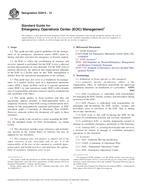
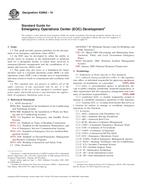 ASTM E2668-10
ASTM E2668-10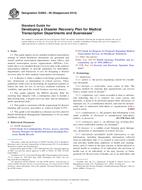 ASTM E2682-09(2014)..
ASTM E2682-09(2014)..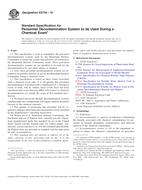 ASTM E2739-10
ASTM E2739-10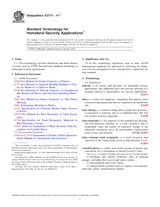 ASTM E2771-11e1
ASTM E2771-11e1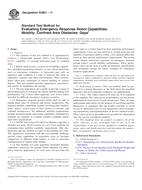 ASTM E2801-11
ASTM E2801-11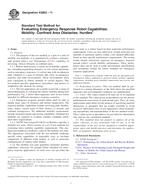 ASTM E2802-11
ASTM E2802-11
 Cookies
Cookies
